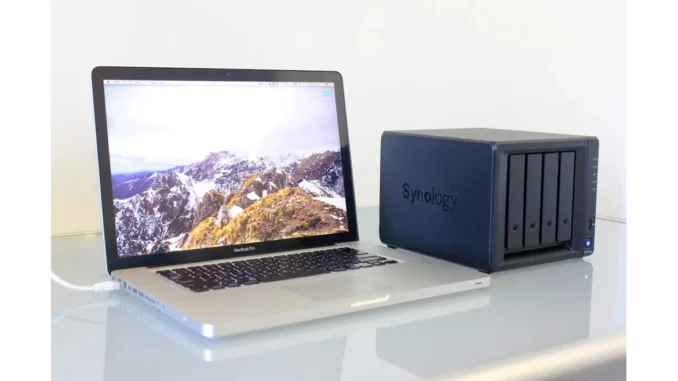
Summary
Synology NAS Devices Exposed to Zero-Click Vulnerability in November 2024
In a stark reminder of the growing threat landscape facing digital storage solutions, a newly uncovered zero-click vulnerability has been discovered in Synology NAS devices, specifically affecting DiskStation and BeeStation models. The vulnerability, identified as CVE-2024-10443 and aptly named “RISK:STATION,” allows cybercriminals to execute remote code without user interaction, posing significant risks to data security. Synology has responded swiftly with security patches, urging users to implement these updates immediately to safeguard against potential exploitation.
Main Article
In the rapidly advancing field of digital storage, Network Attached Storage (NAS) devices have become essential tools for both businesses and individual users. However, the convenience and accessibility they provide also make them attractive targets for cybercriminals. Recent developments have highlighted this risk, with the discovery of a critical zero-click vulnerability in Synology NAS devices, dated November 2024. This vulnerability, CVE-2024-10443, also known as “RISK:STATION,” has raised alarms due to its potential for remote code execution without requiring any action from the user.
Understanding Zero-Click Vulnerabilities
Zero-click vulnerabilities represent a particularly insidious form of cyber threat. Unlike traditional exploits, which often require some form of user interaction—such as clicking a malicious link—zero-click attacks can be deployed without user engagement, making them exceptionally difficult to detect and prevent. In the case of Synology devices, the RISK:STATION flaw targets the Synology Photos and BeePhotos components, allowing attackers to gain root-level access.
This access enables cybercriminals to execute arbitrary code, effectively granting them full control over the compromised devices. Such control not only facilitates data theft and malware installation but also the potential transformation of the device into part of a botnet, thereby amplifying the threat landscape.
The Broader Implications
The vulnerability is further exacerbated by Synology’s QuickConnect feature, which allows remote access to NAS devices even when they are situated behind firewalls. While QuickConnect offers significant convenience for users needing access to their data from various locations, it also increases the devices’ exposure to internet-based attacks. As a result, NAS devices, which often store sensitive personal and business data, become prime targets for cybercriminal exploitation.
Synology’s Response and Mitigation Efforts
Recognising the severity of the RISK:STATION vulnerability, Synology acted promptly by releasing a series of security patches. Users have been advised to update their systems immediately, with recommended patches including updates to Synology Photos and BeePhotos across various operating systems and versions.
To further mitigate risks, users are encouraged to disable the QuickConnect feature and block certain ports. However, Synology emphasises that these actions should complement, not replace, the crucial security patches, which remain the most effective defence against this vulnerability.
Insights and Lessons for the Future
The incident underscores the critical importance of timely security patching and a comprehensive approach to cybersecurity. Users must stay vigilant and proactive, ensuring that updates from device manufacturers are applied promptly. Synology’s rapid response and collaboration with security researchers illustrate the importance of transparent vulnerability disclosure and the need for an agile response from both manufacturers and users to emerging threats.
Detailed Analysis
The discovery of RISK:STATION within Synology NAS devices offers a case study in the challenges and responsibilities inherent in modern cybersecurity. The ability of attackers to exploit zero-click vulnerabilities highlights a concerning trend in cyber threats, demanding a reevaluation of both user and manufacturer responsibilities in protecting data integrity.
The Economics of Cybersecurity
The potential for financial and reputational damage resulting from such vulnerabilities is significant. For businesses, the compromise of sensitive data can lead to regulatory penalties and loss of consumer trust. On a broader scale, the increasing sophistication of cyber attacks necessitates greater investment in cybersecurity infrastructure and education.
Regulatory and Industry Implications
As vulnerabilities like RISK:STATION come to light, they also prompt discussions around regulatory requirements for digital security standards. Industries reliant on digital storage solutions must reassess their security protocols, potentially leading to more stringent regulations aimed at safeguarding against such threats.
Further Development
The unfolding story of zero-click vulnerabilities in NAS devices is far from over. As cybercriminal tactics evolve, so too must the strategies for defence. Stakeholders across the digital storage ecosystem are likely to see increased collaboration to develop more robust security measures.
Future investigations and reports will further illuminate the broader implications of such vulnerabilities, including their impact on regulatory landscapes and user behaviour. Readers are encouraged to stay informed as developments continue, with additional analyses and expert commentary forthcoming on emerging trends and solutions in digital security.

